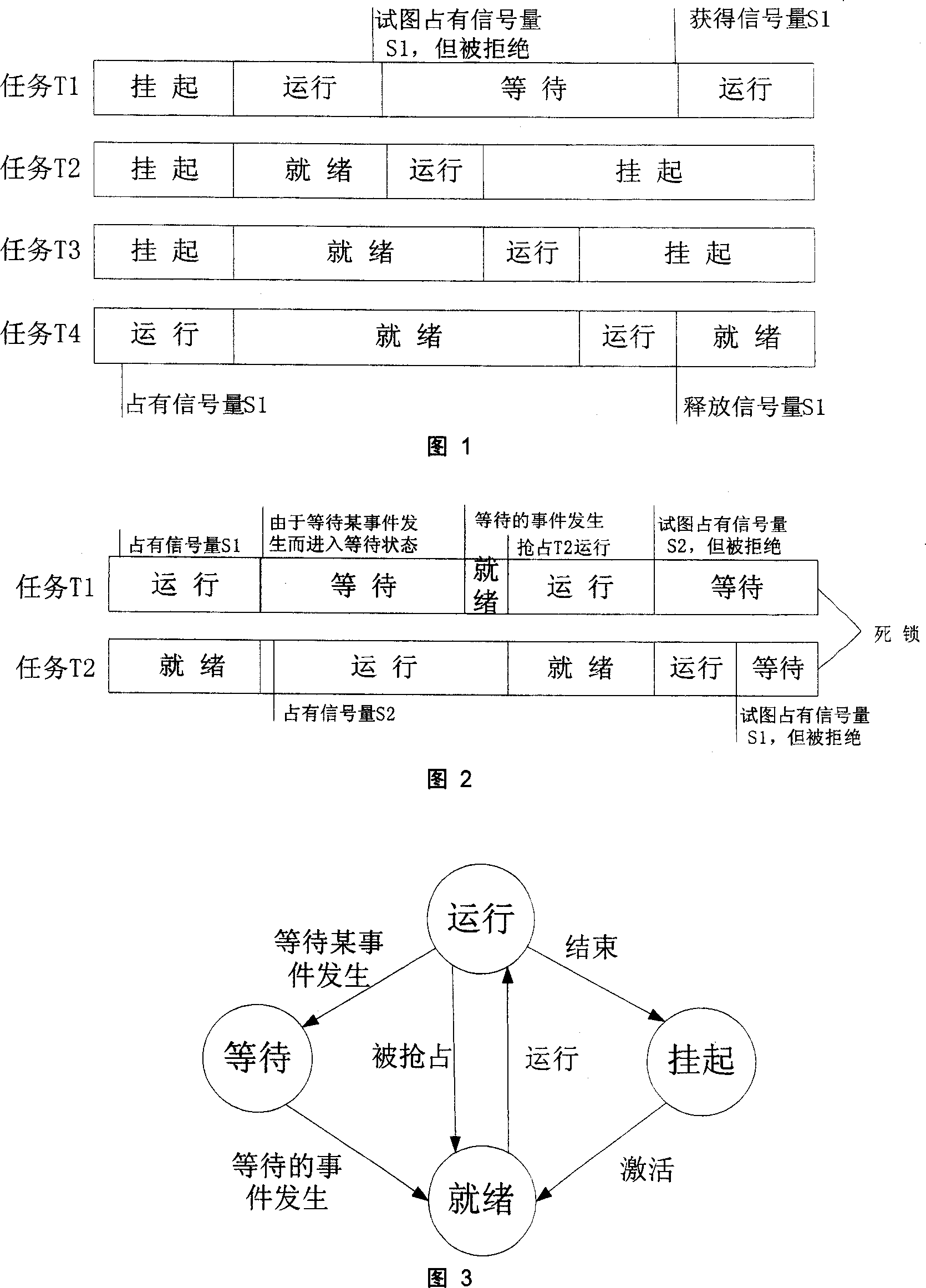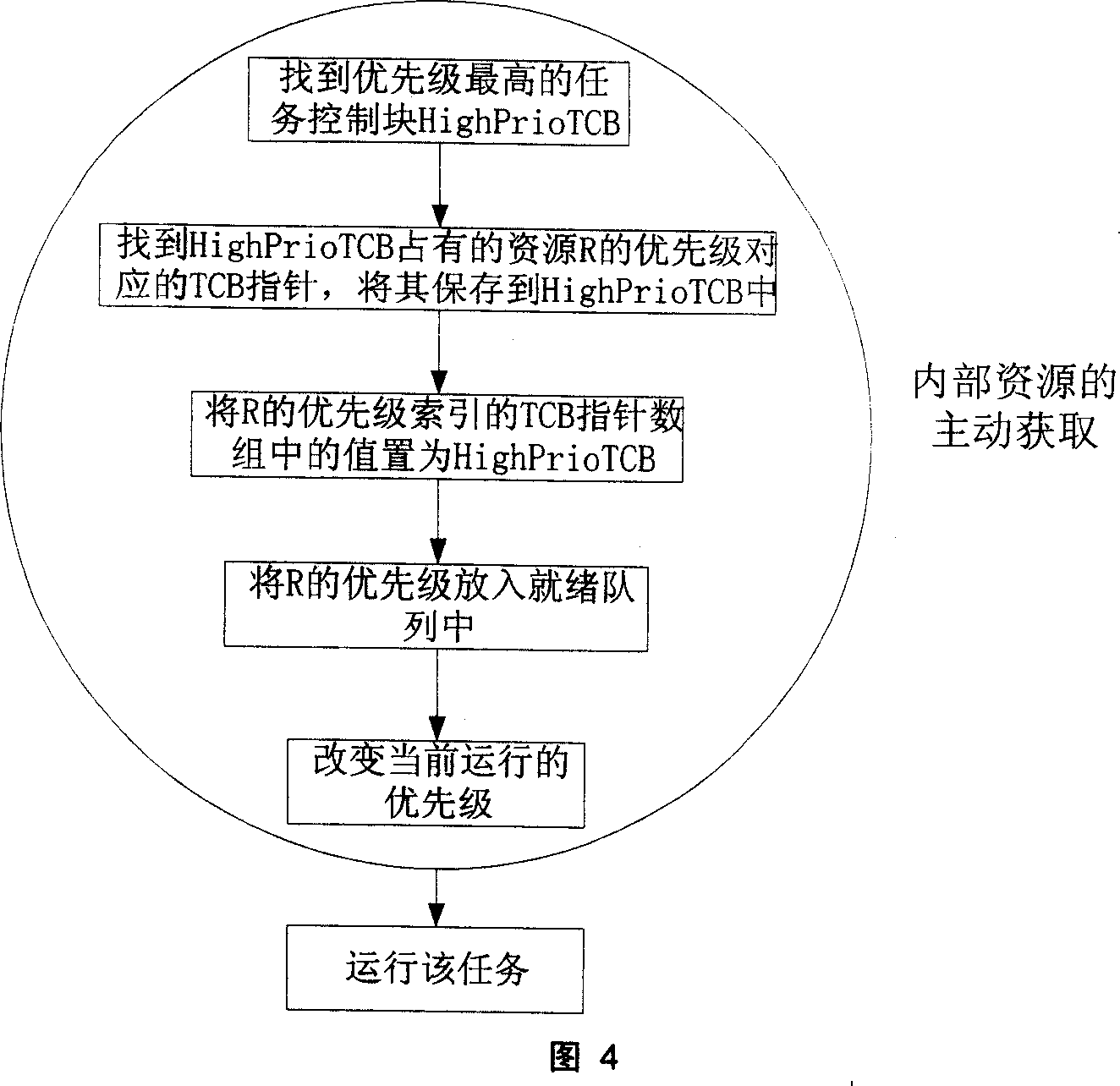Task level resource administration method for micro-kernel embedded real-time operation systems
A real-time operating system and resource management technology, which is applied in the field of task-level resource management of microkernel embedded real-time operating systems, can solve problems such as deadlocks, and achieve the effects of less time overhead, less space overhead, and convenient use and management
- Summary
- Abstract
- Description
- Claims
- Application Information
AI Technical Summary
Problems solved by technology
Method used
Image
Examples
Embodiment Construction
[0033] Below in conjunction with accompanying drawing and example the present invention is described further:
[0034] Figure 3 points out the state of the task and the transition relationship between the states. The task state is divided into four states: ready, running, suspended, and waiting. When a task is ready, it enters the running state if it has the highest priority. When a task is running, there are three state transition situations:
[0035] 1. When a task is waiting for an event to occur, the task enters the waiting state. A task in the waiting state enters the ready state if the event it is waiting for occurs;
[0036] 2. When the task is preempted by other high-priority tasks, the task enters the ready state;
[0037] 3. When the task itself ends voluntarily, the task enters the pending state. Pending tasks can be made ready by being activated.
[0038] The priorities of tasks in the ready state are reflected in the system's priority ready queue. The prior...
PUM
 Login to View More
Login to View More Abstract
Description
Claims
Application Information
 Login to View More
Login to View More - R&D
- Intellectual Property
- Life Sciences
- Materials
- Tech Scout
- Unparalleled Data Quality
- Higher Quality Content
- 60% Fewer Hallucinations
Browse by: Latest US Patents, China's latest patents, Technical Efficacy Thesaurus, Application Domain, Technology Topic, Popular Technical Reports.
© 2025 PatSnap. All rights reserved.Legal|Privacy policy|Modern Slavery Act Transparency Statement|Sitemap|About US| Contact US: help@patsnap.com



